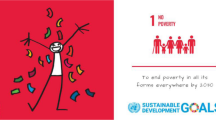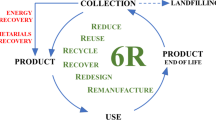Abstract
Discoloration over time is a common cause for dissatisfaction of exterior architectural (décor) paints in much of the world. As such, it is an area of active research interest for producers of these paints and their raw material suppliers. The rate of discoloration of any particular paint depends on the interplay between certain physical properties of that paint and the environmental exposure conditions. Such an interplay can be established by exposing a series of paints to a variety of real-world environmental conditions. In this paper, we report the dirt pickup resistance results for 26 commercial exterior paints exposed at four different locations and the results of a subsequent study of ten commercial paints at two exposure locations. Repeatability and reproducibility of these tests were determined by exposing the same two paints, with replicates, at different exposure sites and at different dates. We believe this is the first time such information has been reported. Within-series repeatability was good, but series-to-series reproducibility was poor, stressing the need to compare performance only among paints exposed at the same time and location. In addition to testing dirt pickup, we investigated the degree to which microbial growth can contribute to discoloration and found a strong correlation between mildew infestation and decrease in L* under conditions that favor mildew growth. Finally, we investigated the extent to which panel orientation affects the decrease in film brightness over time and found that change in L* was partially dependent on orientation, and that early results at 45° south-facing were accurate predictors of long-term results for vertical orientations for the paints tested.



















Similar content being viewed by others
Notes
Visual color ratings were also made on these samples, but there was very little differentiation between the samples at any given time. For this reason, we did not include these results our analysis.
References
Xu, F, Wang, T, Bohling, J, Maurice, AM, Chen, HY, Wu, L, Zhou, S, “Insight into the Dependence of Dirt Adsorption/Desorption on the Surface Wetting Behavior of TiO2-based Nanocomposite Coatings.” Prog. Org. Coat., 131 137 (2019)
Li, S, Gu, GX, Zhou, SX, “Dependence of Dirt Resistance of Steel Topcoats on Their Surface Characteristics.” J. Coat. Technol. Res., 10 (3) 339 (2013)
Shi, YX, Song, ZN, Zhang, WD, Song, JR, Qu, J, Wang, ZD, “Physicochemical Properties of Dirt-Resistance Cool White Coatings for Building Energy Efficiency.” Sol. Energy Mater. Sol. Cells, 110 133 (2013)
Wagner, O, Baumstark, R, “How to Control Dirt Pick-Up of Exterior Coatings.” Macromol. Symp., 187 447 (2002)
Quan, YY, Zhang, IZ, “Experimental Investigation of the Anti-Dust Effect of Transparent Hydrophobic Coatings Applied for Solar Cell Covering Glass.” Sol. Energy Mater. Sol. Cells, 160 382 (2017)
Schoff, CK, “Coatings Clinic: Dirt Pick-Up.” Coat. Tech., 3 (5) 48 (2006)
Smith, A, Wagner, O, “Factors Affecting Dirt Pick-Up in Latex Coatings.” J. Coat. Technol., 68 (862) 37 (1996)
Xuanyi, I, “Dirt Pick-Up in Latex Paint Films.” J. Eur. Coat., 12 1 (2002)
Khanjani, J, Pazokifard, S, Zohuriaan-Mehr, MJ, “Improving Dirt Pick-Up Resistance in Waterborne Coatings Using Latex Blends of Acrylica/PDMS Polymers.” Prog. Org. Coat., 102 151 (2017)
Xiang, G, Chyasnavichyus, M, Meyers, G, Derek, W, “Surface Elastic Modulus of Latex Films Studied with Atomic Force Microscopy (AFM) and Its Correlation with Dirt Pick-Up Resistance (DPUR) Performance.” Prog. Org. Coat., 126 168 (2019)
Brown, SC, Diebold, MP, Kraiter, DC, Velez, C, Jernakoff, P, Velez, CA, “Towards a Comprehensive Understanding of Dirt Pickup Resistance.” Proceedings of the 2020 American Coatings Conference (to be published)
Diebold, MP, Bettler, CR, Mukoda, DM, “Mechanism of TiO2/ZnO Instability.” J. Coat. Technol., 75 (942) 29 (2003)
Author information
Authors and Affiliations
Corresponding author
Additional information
Publisher's Note
Springer Nature remains neutral with regard to jurisdictional claims in published maps and institutional affiliations.
Electronic supplementary material
Below is the link to the electronic supplementary material.
Appendix
Appendix
NATP | Wt (lbs) | Dry wt (lbs) | Vol (gal) |
|---|---|---|---|
Grind for 10–15 min on high-speed disperser at 2000–2500 rpm | |||
Water | 135.78 | 16.30 | |
Hydrophobic copolymer dispersant (25%) | 15.90 | 4.0 | 1.75 |
Nonionic surfactant | 2.00 | 0.23 | |
Molecular defoamer | 2.00 | 0.27 | |
Microbicide | 1.70 | 0.20 | |
Cosolvent | 9.00 | 1.00 | |
Universal grade TiO2 | 200.00 | 200.00 | 6.00 |
Functional extender (nepheline syenite) | 176.75 | 176.75 | 7.97 |
Attapulgite | 5.00 | 5.00 | 0.25 |
Grind subtotal | 548.13 | 382.15 | 33.96 |
Let down: mix in 5 min at low speed 1000 rpm as follows | |||
Acrylic polymer emulsion (60.5%) | 323.60 | 195.78 | 36.48 |
Opaque polymer (30%) | 44.60 | 13.38 | 5.25 |
Molecular defoamer | 3.00 | 0.40 | |
Coalescent | 4.20 | 0.55 | |
Mildewcide | 3.00 | 0.34 | |
pH adjuster | 0.00 | ||
Water | 155.50 | 18.67 | |
LSR HEUR rheology modifier | 12.50 | 2.19 | 1.46 |
HSR HEUR rheology modifier | 25.00 | 5.00 | 2.87 |
Total | 1119.53 | 598.49 | 99.98 |
Typical | pH 9.11 | ||
KU 86.5 | |||
ICI 1.13 | |||
PVC (%) | 44.5 | ||
Vol solids (%) | 39.2 | ||
Wt solids (%) | 53.5 | ||
TiO2 content (lbs/gal) | 2.00 |
Rights and permissions
About this article
Cite this article
Diebold, M.P., Kraiter, D.C. Effect of exposure conditions on dirt pickup resistance (DPR). J Coat Technol Res 17, 597–611 (2020). https://doi.org/10.1007/s11998-020-00340-5
Published:
Issue Date:
DOI: https://doi.org/10.1007/s11998-020-00340-5




